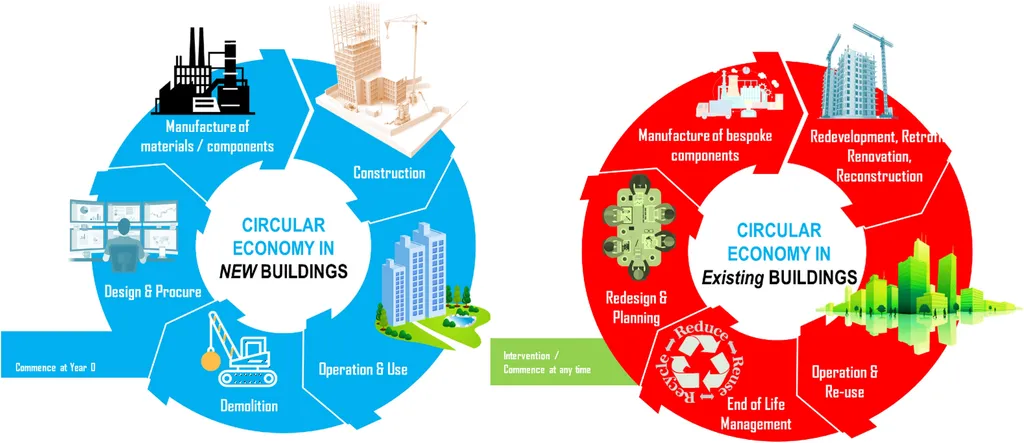In the quest for sustainability, the construction industry faces a monumental challenge: balancing growth with environmental responsibility. A recent study, led by Goran Sibenik from the Future Cities Lab Global Programme at the Singapore-ETH Centre, is shedding light on how building designs can better support the circular economy, potentially revolutionizing the way we think about resource use in construction.
The circular economy, a model that prioritizes reuse, repair, and recycling, is gaining traction across industries. In construction, it could mean significant reductions in waste and resource consumption. Sibenik’s research, published in the International Journal of Sustainable Engineering (translated as the Journal of Sustainable Engineering), reviews 32 quantitative methods to measure how building designs influence circular economy potential.
“The construction sector is a major contributor to global resource consumption and waste production,” Sibenik explains. “Our research aims to identify which building configurations enhance resource circulation and which methods exist to measure this influence.”
The study proposes a Circular Economy Potential framework that aligns design strategies, tiers of built assets, and circular economy resource flows. This framework could serve as a blueprint for future building designs, helping architects and engineers create structures that are not only functional but also sustainable.
One of the key findings is the identification of gaps in the current literature. Sibenik notes, “There’s a need for a more holistic approach to quantifying a built asset’s circular economy potential.” This insight could pave the way for new measurement tools and methods, further advancing the circular economy in construction.
The implications for the energy sector are substantial. Buildings account for a significant portion of global energy consumption. By designing structures that support resource circulation, the energy sector could see reduced demand for raw materials and decreased waste, leading to more efficient and sustainable operations.
Sibenik’s research is a stepping stone towards a future where buildings are designed with circular economy principles in mind. As the construction industry continues to evolve, this framework could become a standard practice, driving innovation and sustainability in the field.
In the words of Sibenik, “This will serve as a foundation for our development of a measurement method and tool for circular economy potential going forward.” The journey towards a circular economy in construction is just beginning, and Sibenik’s research is a significant step in the right direction.

